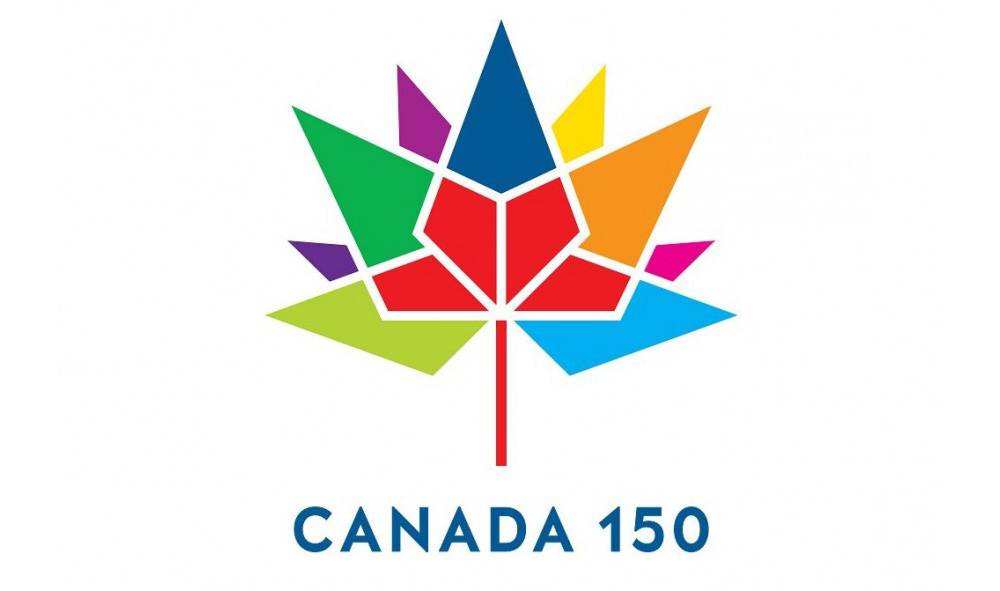
Canada has issued 10 attractive maple-leaf-shaped stamps to commemorate its 150th anniversary, which falls on Canada Day, July 1.
National anniversaries offer opportunities to reimagine national identity. The eye-catching stamps incorporate the themes that Justin Trudeau’s Liberal government defined for “Canada 150,” the official label for the year-long sesquicentennial festivities: diversity and inclusiveness, reconciliation with indigenous peoples, stewardship of the environment, and the engagement of youth into the country’s public life.
The stamps that reflect these themes are entirely fitting for our level-headed neighbors to the north, whom The Economist recently held up as an example to the world for their tolerance of minorities, receptiveness to refugees and rejection of protectionism in a time of “wall-builders, door-slammers and drawbridge-raisers.”
Duke Professor Stephen Kelly shares insight on 150th anniversary of the formation of the Dominion of Canada. From 2000-2004, Kelly was Deputy Chief of Mission of the U.S. Mission to Canada. He also served as Consul General in Quebec City from 1995-1998, where he was the chief U.S. reporting officer on the Quebec Sovereignty Referendum of October 1995.
The stamps have been introduced in an appealing 30-page bilingual (of course) booklet entitled “Canada 150: Celebrating Canadian Milestones / Célébrons Notre Histoire” that is available free online. Together they constitute perhaps the most low-key and least bellicose representation of national identity ever crafted.
Predictable nationalist tropes like battlefield heroism are entirely absent, despite the Canadian armed forces’ distinguished service in the Gulf War, Bosnia and Afghanistan. Not a single Royal Canadian Mountie appears.
The booklet accompanies each stamp with text that charms by its innocence. The “Expo ’67” stamp celebrates the Montreal World’s Fair, “when Canada wowed the world by attracting 50 million visitors, the most notable figures of the day: Princess Grace of Monaco and Bing Crosby among them.”
Understandable in a sports-mad country, three stamps feature athletic competition. One was inevitable, the “’Summit Series’” pitting Canada’s top (ice hockey) stars against the Soviet Union’s.” (Spoiler alert: Canada won.) The other two sport stamps feature the Olympics and Paralympics hosted in Canada that “boosted our sense of national pride and showcased Canada to the world.”
Joining Paralympians to reflect the theme of inclusiveness is the stamp honoring the 2005 Marriage Equality Act that “made Canada the fourth country to grant same-sex couples the right to marry the one they love.”
The 4,860-mile Trans-Canada Highway features on two stamps, first as “the nation-building road needed for Canadians to explore their vast country,” and later as the stage for “The Marathon of Hope,” a dramatic attempt by cancer survivor Terry Fox to run across the country on his artificial leg to raise money for cancer research. Fox reached only the half-way point before his cancer recurred, but his effort amassed more than $700 million. The “Canada 150” message is that heroes need not win to be heroic.
The “Canadarm” stamp uses a Canadian-designed robotic arm deployed on NASA’s space shuttle to vaunt Canada as a “nation of innovators.” The accompanying text’s legerdemain is more nimble than the Canadarm; it manages to connect Canada to the 1969 moon landing without directly mentioning the United States!
The least successful objective of “Canada 150” has been reconciliation with aboriginal peoples. A self-congratulatory stamp lauds the creation of the northern territory of Nunavut – “our land” in the Inuktitut language – as “the largest Aboriginal land claims agreement in Canadian history.” But this superlative papers over how many claims have not been resolved, and obscures how little Canada has done to atone for its dishonorable treatment of First Nations.
Only one stamp deals with high politics. “The Constitution” accurately explains that the Constitution Act of 1982 was “a critical step to full sovereignty” because “until that day only the British Parliament could amend our constitution.”
This final step to Canadian independence will be celebrated in Ottawa at the pinnacle of the sesquicentennial festivities on Canada Day, July 1st. Now past her 90th birthday, Queen Elizabeth has sent her sincere regrets. Prince Charles, Canada’s future king, will instead join Prime Minister Trudeau and pop star Carly Rae Jepson on Parliament Hill.
Simultaneous satellite celebrations have been scheduled across the country, including an appearance in Toronto harbor by a six-story tall yellow rubber duck. No one seems exactly certain how a giant duck connects to Canada’s national identity, and the opposition Conservative party has demanded to know “who pays this duck’s bill.”
But a national columnist for the Globe & Mail vigorously supports “team duck.” Her rationale reflects the new unbuttoned Canada revealed by the sesquicentennial: “It presents us as such goofballs on the increasingly dark international stage. We are fighting about an overfed bath toy. … This says something hopeful about our country.”
Who in America could disagree?
John Herd Thompson is professor emeritus of history at Duke University